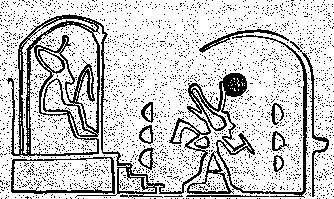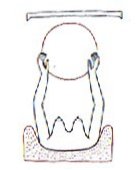|
TRANSLATIONS
The second (and last) of the underpages:
The link 'to count with 1 glyph per day' leads to:
Gb5-9 and Gb5-12 could be versions of Rogo (if we believe in Mamari). The pau sign in Gb5-12 could be the bulbous bottom of Rogo, and by being located at right it leans backwards:
Metoro said vae kore (no legs) at a type of glyph which I have named accordingly:
I have listed seven such in G:
Gb5-9 does not belong to my glyph type vae kore, even if we can see the resemblance with Ga3-3. My system for classification puts Gb5-9 instead in the category tagata rere:
I have always wondered what made Metoro say vae kore at that type of glyph, and I tried in the summary page to explain:
But the vae kore glyph type shows only one wing ('arm'). Maybe the vae kore glyphs are similar to honu glyphs with legs, they do not stand at solstice but are located at a time when movement has begun:
Gb5-9 appears to be a combination of solstice (both wings are seen) and movement (head in profile). And we know that winter solstice lies ahead. The calendar, on the other hand, has its 'solstice' 46 days earlier:
363 is the number for winter solstice, I guess, because 36 is at left and 63 at right. |
||||||||||||||||||||||||||||||||||||||||||||||||||||||||||||||||||||||||||||||||||||||||||||||||||||||||||||||||||||||||||||||||||||||||||||||||||||||||||||||||||||||||||||||||||||||||||||||||||||||||||||||||||||||||||||||||||||||||||||||||||||||||||||||||||||||||||||||||||||||||||||||||||||||||||||||||||||||||||||||||||||||||||||||||||||||||||||||||||||||||||||||||||||


















































